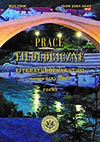„Rzeka krwi” i pewien możliwy dialog międzykulturowy
The “river of blood” and a possible intercultural dialogue
Author(s): Grażyna Szwat-GyłybowaSubject(s): Literary Texts
Published by: Wydział Polonistyki Uniwersytetu Warszawskiego
Keywords: kultura bułgarska; Iwan Wazow; topos rzeki; mit narodowy; dialog międzykulturowy; Bulgarian culture; Antoni Piotrowski; Ivan Vazov; topos of the river; national myth; intercultural dialog
Summary/Abstract: The article represents an attempt to reflect on the possible causes of a positive reception in Bulgaria for the painting entitled {The Batak Massacre} (1892) by a Polish artist, Antoni Piotrowski. This work is considered one of the most eloquent visualizations of the traumatic events of significance to Bulgarians that took place during the so-called anti-Turkish April uprising in 1876. Due to the entanglement of circumstances the massacre in Batak has grown to the status of a national myth. The artist, well acquainted with the current situation in the Balkans (which is documented in his autobiography), could not have, however, been fully aware of the semantic potential of the associations invoked by his painting. The topos of the “river of blood”, placed at the centre of attention, interpreted by Piotrowski in a manner differing from that in Southern Slavic folklore or Bulgarian literature, becomes the starting point for the author’s reflections on the repertoire of associations that this work could invoke in the recipient “initiated” into the meanders of their own culture, as was Ivan Vazov, the writer and apologist for the painting. The suggested research approach can be put in the realm of a particular imagology based on the reconstruction of possible strategies to negotiate meanings in intercultural relations.
Journal: Prace Filologiczne. Literaturoznawstwo [PFLIT]
- Issue Year: 2015
- Issue No: 5 (8)
- Page Range: 271-290
- Page Count: 20
- Language: Polish

